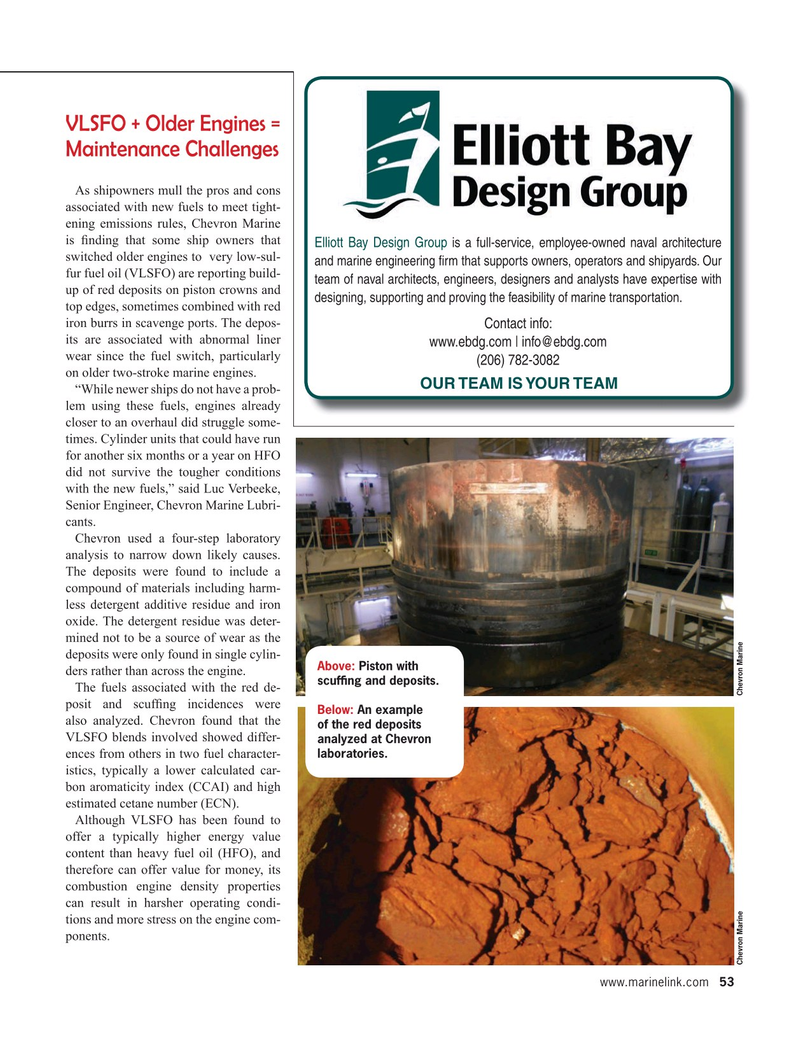
Page 53: of Maritime Reporter Magazine (February 2021)
Government Shipbuilding
Read this page in Pdf, Flash or Html5 edition of February 2021 Maritime Reporter Magazine
VLSFO + Older Engines =
Maintenance Challenges
As shipowners mull the pros and cons associated with new fuels to meet tight- ening emissions rules, Chevron Marine is ? nding that some ship owners that
Elliott Bay Design Group is a full-service, employee-owned naval architecture switched older engines to very low-sul- and marine engineering ?rm that supports owners, operators and shipyards. Our fur fuel oil (VLSFO) are reporting build- team of naval architects, engineers, designers and analysts have expertise with up of red deposits on piston crowns and designing, supporting and proving the feasibility of marine transportation.
top edges, sometimes combined with red iron burrs in scavenge ports. The depos-
Contact info: its are associated with abnormal liner www.ebdg.com | [email protected] wear since the fuel switch, particularly (206) 782-3082 on older two-stroke marine engines.
OUR TEAM IS YOUR TEAM “While newer ships do not have a prob- lem using these fuels, engines already closer to an overhaul did struggle some- times. Cylinder units that could have run for another six months or a year on HFO did not survive the tougher conditions with the new fuels,” said Luc Verbeeke,
Senior Engineer, Chevron Marine Lubri- cants.
Chevron used a four-step laboratory analysis to narrow down likely causes.
The deposits were found to include a compound of materials including harm- less detergent additive residue and iron oxide. The detergent residue was deter- mined not to be a source of wear as the deposits were only found in single cylin-
Above: Piston with ders rather than across the engine.
scuf? ng and deposits.
The fuels associated with the red de- posit and scuf? ng incidences were
Below: An example also analyzed. Chevron found that the of the red deposits
VLSFO blends involved showed differ- analyzed at Chevron laboratories. ences from others in two fuel character- istics, typically a lower calculated car- bon aromaticity index (CCAI) and high estimated cetane number (ECN).
Although VLSFO has been found to offer a typically higher energy value content than heavy fuel oil (HFO), and therefore can offer value for money, its combustion engine density properties can result in harsher operating condi- tions and more stress on the engine com- ponents.
Chevron Marine Chevron Marine www.marinelink.com 53
MR #2 (50-59).indd 53 2/4/2021 10:14:13 AM

 52
52

 54
54
